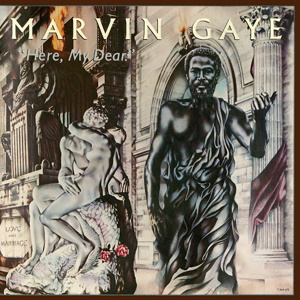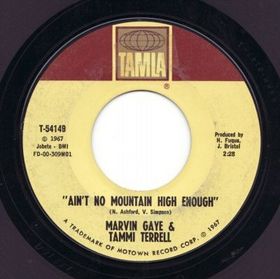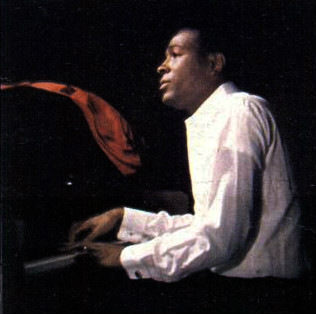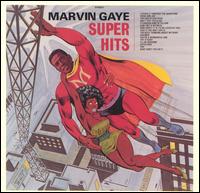
Marvin Pentz Gaye Jr. was an American singer, songwriter, and musician. He helped shape the sound of Motown in the 1960s, first as an in-house session player and later as a solo artist with a string of successes, which earned him the nicknames "Prince of Motown" and "Prince of Soul".

What's Going On is the eleventh studio album by American soul singer Marvin Gaye. It was released on May 21, 1971, by the Motown Records subsidiary label Tamla. Recorded between 1970 and 1971 in sessions at Hitsville U.S.A., Golden World, United Sound Studios in Detroit, and at The Sound Factory in West Hollywood, California, it was Gaye's first album to credit him as producer and to credit Motown's in-house session musicians, known as the Funk Brothers.

"I Heard It Through the Grapevine" is a song written by Norman Whitfield and Barrett Strong for Motown Records in 1966. The first recording of the song to be released was produced by Whitfield for Gladys Knight & the Pips and released as a single in September 1967. It went to number one on the Billboard R&B Singles chart and number two on the Billboard Pop Singles chart and shortly became the biggest selling Motown single up to that time.

Let's Get It On is the thirteenth studio album by the American soul singer, songwriter, and producer Marvin Gaye. It was released on August 28, 1973, by the Motown subsidiary label Tamla Records on LP.

Here, My Dear is the fifteenth studio album by music artist Marvin Gaye, released as a double album on December 15, 1978, on Motown-subsidiary label Tamla Records. Recording sessions for the album took place between 1977 and 1978 at Gaye's personal studios, Marvin Gaye Studios, in Los Angeles, California. The album was notable for its subject matter focusing largely on Gaye's acrimonious divorce from his first wife, Anna Gordy Gaye.

"Let's Get It On" is a song by soul musician Marvin Gaye, released June 15, 1973, on Motown-subsidiary label Tamla Records. The song was recorded at Hitsville West in Los Angeles, California. The song features romantic and sexual lyricism and funk instrumentation by The Funk Brothers. The title track of Gaye's album of the same name, it was written by Marvin Gaye and producer Ed Townsend. "Let's Get It On" became Gaye's most successful single for Motown and one of his most well-known songs. With the help of the song's sexually explicit content, "Let's Get It On" helped give Gaye a reputation as a sex symbol during its initial popularity. "Let's Get It On" is written and composed in the key of E-flat major and is set in time signature of common time with a tempo of 82 beats per minute.

"Ain't No Mountain High Enough" is a song written by Nickolas Ashford & Valerie Simpson in 1966 for the Tamla label, a division of Motown. The composition was first successful as a 1967 hit single recorded by Marvin Gaye and Tammi Terrell, and became a hit again in 1970 when recorded by former Supremes frontwoman Diana Ross. The song became Ross's first solo number-one hit on the Billboard Hot 100 chart and was nominated for the Grammy Award for Best Female Pop Vocal Performance.

"I Want You" is a song written by Leon Ware and Arthur "T-Boy" Ross and performed by American singer and songwriter Marvin Gaye. It was released as a single in 1976 on his fourteenth studio album of the same name (1976) on his Tamla label. The song introduced a change in musical styles for Gaye, who before then had been recording songs with a funk edge. "I Want You", among other similar songs, gave him a disco audience. Ware, who produced the song alongside Gaye, also was attributed with the single's success.

I Want You is the fourteenth studio album by American soul singer and songwriter Marvin Gaye. It was released on March 16, 1976, by the Motown Records-subsidiary label Tamla.

Midnight Love is the seventeenth studio album by Marvin Gaye and the final album to be released during his lifetime. He signed with the label Columbia in March 1982 following his exit from Motown.

Diana & Marvin is a duets album by American soul musicians Diana Ross and Marvin Gaye, released October 26, 1973 on Motown. Recording sessions for the album took place between 1971 and 1973 at Motown Recording Studios in Hollywood, California. Gaye and Ross were widely recognized at the time as two of the top pop music performers.

In the Groove is the eighth studio album by soul musician Marvin Gaye, released on August 26, 1968 on the Motown-subsidiary label Tamla Records. It was the first solo studio album Gaye released in two years, in which during that interim, the singer had emerged as a successful duet partner with female R&B singers such as Kim Weston and Tammi Terrell. In the Groove was reissued and retitled as I Heard It Through the Grapevine after the unexpected success of Gaye's recording of the same name, which had been released as a single from the original album.

Marvin Gaye Live! is the second live album issued by soul musician Marvin Gaye, released on June 19, 1974, by Tamla Records.

Live at the London Palladium is a live double album by soul musician Marvin Gaye, released March 15, 1977, on Tamla Records. Recording sessions took place live at several concerts at the London Palladium in London, England, in October 1976, with the exception of the hit single "Got to Give It Up", which was recorded at Gaye's Los Angeles studio Marvin's Room on January 31, 1977. Live at the London Palladium features intimate performances by Gaye of many of his career highlights, including early hits for Motown and recent material from his previous three studio albums. As with his previous live album, Marvin Gaye Live!, production of the record was handled entirely by Gaye, except for the studio portion, "Got to Give It Up", which was managed by Art Stewart.

American music artist Marvin Gaye released 25 studio albums, four live albums, one soundtrack album, 24 compilation albums, and 83 singles. In 1961 Gaye signed a recording contract with Tamla Records, owned by Motown. The first release under the label was The Soulful Moods of Marvin Gaye. Gaye's first album to chart was a duet album with Mary Wells titled Together, peaking at number forty-two on the Billboard pop album chart. His 1965 album, Moods of Marvin Gaye, became his first album to reach the top ten of the R&B album charts and spawned four hit singles. Gaye recorded more than thirty hit singles for Motown throughout the 1960s, becoming established as "the Prince of Motown". Gaye topped the charts in 1968 with his rendition of "I Heard It Through the Grapevine", while his 1969 album, M.P.G., became his first number one R&B album. Gaye's landmark album, 1971's What's Going On became the first album by a solo artist to launch three top ten singles, including the title track. His 1973 single, "Let's Get It On", topped the charts while its subsequent album reached number two on the charts becoming his most successful Motown album to date. In 1982, after 21 years with Motown, Gaye signed with Columbia Records and issued Midnight Love, which included his most successful single to date, "Sexual Healing". Following his death in 1984, three albums were released posthumously while some of Gaye's landmark works were re-issued.
The Very Best of Marvin Gaye is the title of two compilations by Motown artist Marvin Gaye.

Super Hits is a compilation album by American soul singer, songwriter, and producer Marvin Gaye. It was released in 1970 by Motown's subsidiary Tamla Records and compiles Gaye's pop-R&B singles recorded from 1962 to 1969.

Looking Back, also later known as Anthology, is a triple LP anthology by American soul musician Stevie Wonder, released in 1977 on Motown Records. Since its release in 12-inch triple LP format, it has not been reissued and is considered a limited edition. The album chronicles 40 songs from Wonder's first Motown period, which precedes the classic period of his critically acclaimed albums.

Marvin Gaye: The Love Songs is a 2000 compilation album recorded by Motown singer Marvin Gaye. Included are his UK hits, "Abraham, Martin & John", his two duets with Diana Ross: "You Are Everything" and "Stop, Look, Listen " and his international hits including "I Heard It Through the Grapevine", "What's Going On" and "Sexual Healing". The album was only released in the United Kingdom, where it peaked at number eight on the UK albums chart.

"How Sweet It Is (To Be Loved by You)" is a song recorded by American soul singer Marvin Gaye from his fifth studio album of the same name (1965). It was written in 1964 by the Motown songwriting team of Holland–Dozier–Holland, and produced by Brian Holland and Lamont Dozier. The song title was inspired by one of the actor and comedian Jackie Gleason's signature phrases, "How Sweet It Is!"



















